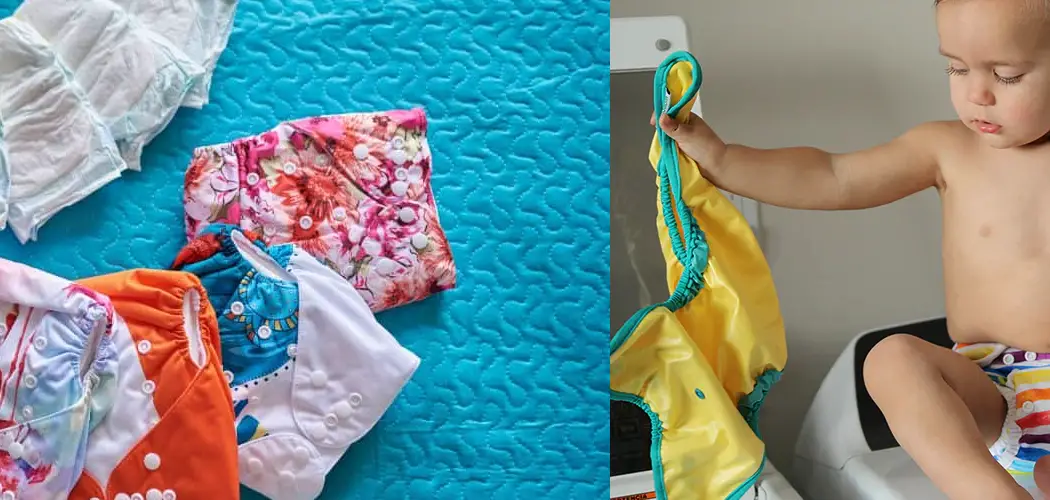Are you a cloth diaper-wearing parent? If so, you know that it’s important to keep your diapers clean and fresh – especially if you’re using multiple ones on your baby simultaneously. One way to do this is by stripping them.
Like many new moms, when I was pregnant, I started to think about the daunting task of potty training my child. But then I also had to start thinking about what kind of diapers I would use. Cloth? Disposable? No matter what kind of diaper you choose, eventually, they will need to be stripped.
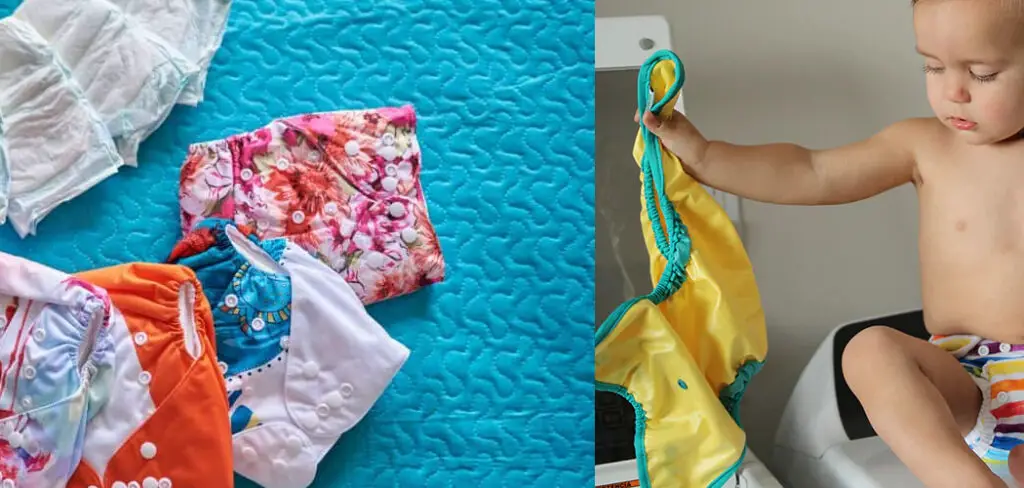
It can be daunting the first time you have to strip cloth diapers. But, with a few simple tips, it’s easy enough to do at home. This post will outline the steps you need to take and offer some helpful advice on how to strip cloth diapers. Keep reading for all the details!
What Are the Benefits of Stripping Cloth Diapers?
One of the main benefits of stripping cloth diapers is that they can help keep them clean, fresh, and free from build-up. This is especially important if you have multiple children using the same diapers or if your baby has sensitive skin. Regularly stripping your cloth diapers can help prevent irritation and infection and keep your baby happy and comfortable.
Additionally, stripping cloth diapers is a relatively simple and affordable process. You can easily strip your diapers at home with a few simple tools. And by keeping your diapers clean, fresh, and free from build-up, they will last longer and save you money in the long run.
What Will You Need?
There are a few basic tools and supplies that you will need to strip cloth diapers. These include:
- A tub or sink filled with warm water
- A phosphate-free detergent, such as liquid dish soap or baby laundry detergent
- An empty trash can or diaper pail for storing the stripped diapers
- A soft scrub brush or toothbrush for scrubbing stains and build-up from your diapers
Once you have gathered all of these tools and supplies, you are ready to start stripping your cloth diapers. Simply follow these steps to get started.
10 Easy Steps on How to Strip Cloth Diapers
Step 1. Prepare Your Supplies:
Before you begin stripping your diapers, fill a tub or sink with warm water. Add a small amount of phosphate-free detergent or liquid dish soap. You can also use a baby laundry detergent or an oxygen-based bleach. It will help to break down any stuck-on stains and build-up from your diapers.
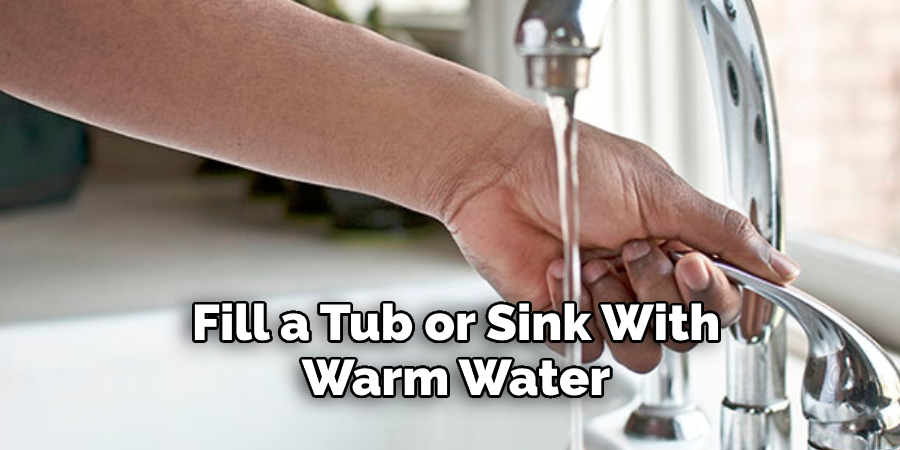
Step 2. Soak Your Diapers:
Next, add your cloth diapers to the water, ensuring they are fully submerged. Let them soak for at least 15-20 minutes so that the detergent has time to work its way deep into the fibers. Be careful not to leave your diapers soaking for too long, as this can lead to mildew or another unwanted buildup.
Step 3. Scrub Your Diapers:
Once your diapers have soaked, use a soft brush or toothbrush to scrub away any stains or build-up gently. Be sure to focus on areas that are prone to staining, like the front of male diapers or the crotch area of female diapers. Otherwise, you can simply scrub your diaper to ensure all the build-up and stains are off.
Step 4. Rinse Your Diapers:
After scrubbing your cloth diapers, rinse them thoroughly in clean water until all traces of detergent and soap have been removed. You may need to repeat this step several times until the water clears. If you have an extra rinse cycle on your washing machine, you can also use this to do a final rinse.
Step 5. Dry Your Diapers:
Once your cloth diapers are clean and free of stains and build-up, you can either hang them to dry outside or put them in the dryer on a low setting. Be sure not to use too much heat, as this can damage your diapers over time. Because every diaper is different, it will vary how long they take to dry. Typically, most diapers will be dry within a few hours.
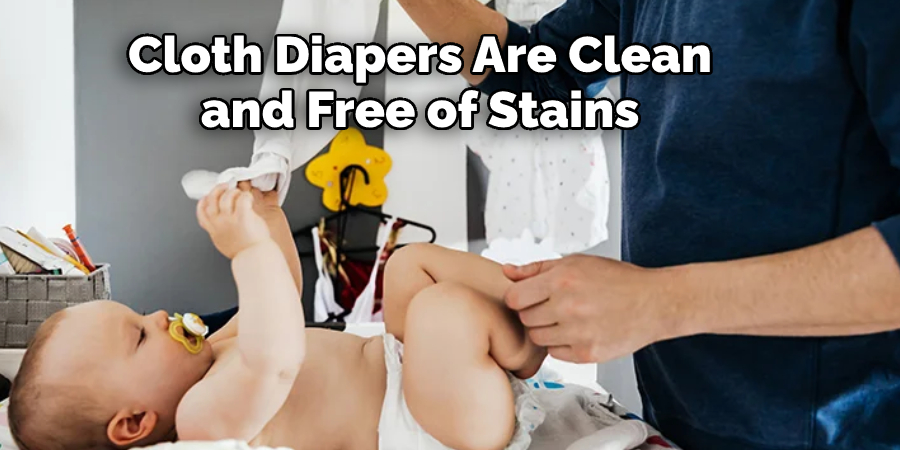
Step 6. Store Your Diapers:
Once your cloth diapers are completely dry, store them in an airtight container or a diaper pail until they are ready to be used again. This will help keep them clean and free from dirt and stains between uses. It’s important to note that you may need to repeat this process several times before all the build-up is removed from your cloth diapers. Depending on how often you use them and how long they have been in use, you may need to strip your diapers every few weeks or even more frequently.
Step 7. Consider Adding a Boost:
If you find that your diapers are still struggling to stay clean and free from build-up, you can also consider adding an extra boost of cleaner or bleach to your routine. There are specific detergents designed for cloth diapers that can help break down stubborn stains and keep them looking brand new. Don’t hesitate to try different detergents and cleansers until you find one that works best for your diapers.
Step 8. Maintain Your Diapers:
To prevent build-up in the future, it’s important to maintain regular cleaning and care of your cloth diapers. This means washing them after every use whenever possible, using a gentle soap or detergent like baby laundry detergent, and rinsing them thoroughly after each use. This will help prevent the buildup of dirt, stains, and oils that can lead to a need for stripping in the future.

Step 9. Be Patient:
While it may take some time to completely strip your cloth diapers and remove all the build-up, be sure to remain patient during this process. Remember that gradual changes and small adjustments can significantly affect how well your cloth diapers perform. Regular cleaning and care prevent future buildup and keep your cloth diapers looking great for years to come.
Step 10. Consult with a Professional:
If you’re still having trouble getting your cloth diapers clean and free from build-up after several rounds of stripping, consider consulting with a professional or specialist who specializes in cleaning cloth diapers. They will have access to additional tools and resources to help remove stubborn stains and build-up so you can continue using your cloth diapers without worry.
Follow these steps to successfully strip your cloth diapers and remove any build-up or stains that may be present.
5 Additional Tips and Tricks
1. Soak your diapers in warm water and gentle detergent.
2. Rinse the diapers thoroughly to remove all traces of the detergent and gunk from your diapers.
3. Gently scrub your cloth diapers with an old toothbrush or soft bristle brush, if needed. This can help to loosen any tough stains or residue that may be stuck on the fabric.
4. Rinse your diapers again to remove all traces of soap and dirt before leaving them to soak overnight in plain water or a vinegar solution. This will help prevent build-up from occurring over time and keep your cloth diapers looking clean and smelling fresh between wash cycles.
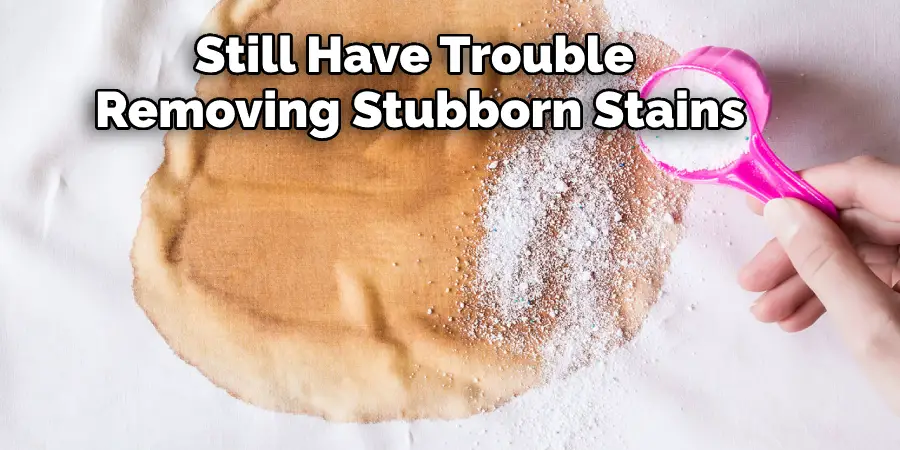
5. If you still have trouble removing stubborn stains or build-up from your cloth diapers, consider using a commercial stripping solution specifically designed for this purpose. Just be sure to follow the manufacturer’s instructions carefully, and always test any cleaning solution in an inconspicuous area of your diapers first to ensure that it is safe for use on the fabric.
With these tips in mind, you can effectively strip and clean your cloth diapers easily!
5 Things You Should Avoid
1. Using Hot Water or Harsh Detergents: When stripping your cloth diapers, it is important to avoid using hot water or harsh detergents. This can damage the fabric and cause discoloration or other unwanted effects.
2. Pouring Bleach Directly Onto the Diapers: Another common mistake when stripping cloth diapers is to use bleach directly on the diapers without diluting it first. This can severely damage the fabric and may even weaken its ability to absorb liquid effectively.
3. Exposing Your Diapers to Sunlight for Extended Periods of Time: While some sun exposure may help remove stains from your cloth diapers, prolonged exposure should be avoided, as this can also damage the fabric and lead to fading or discoloration over time.
4. Using Laundry Boosters That Contain Enzymes: Enzymes are commonly found in laundry boosters and stain removers, but these can also cause issues when trying to strip cloth diapers. If you use a laundry booster or enzyme detergent, remove it from your wash cycle before stripping your cloth diapers.
5. Leaving Your Diapers in the Washer for Too Long: Don’t leave your dirty diapers sitting in the washing machine for long periods after each wash cycle. This can lead to the buildup of odor-causing bacteria and may make it more difficult to strip the diapers effectively.
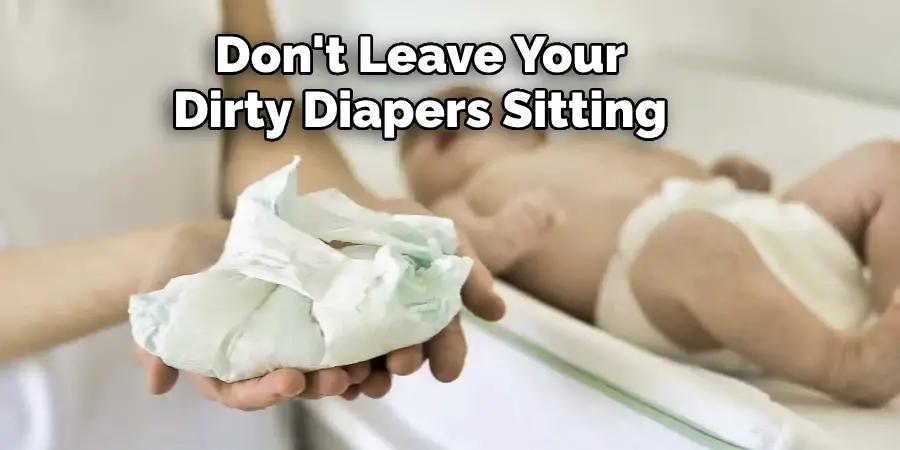
Follow these simple tips and avoid common mistakes when stripping cloth diapers. You can ensure that your diapers will continue to work efficiently and eliminate odors without causing any damage to the fabric. Good luck!
When Should You Strip Your Cloth Diapers?
If you have difficulty cleaning your cloth diapers and are free of stains or build-up, it may be time to strip them. This process involves soaking the diapers in warm water and gentle detergent, gently scrubbing them with a soft bristle brush if needed, and leaving them to soak in plain water or a vinegar solution overnight.
Sometimes, it is especially important to strip your cloth diapers, such as if you notice any stubborn stains or residue that won’t come off during normal wash cycles. Additionally, some types of laundry boosters or enzyme detergents commonly used for other clothes can cause issues when stripping cloth diapers, so it is important to avoid using these products or remove them from your wash cycle before starting the process.
If you are experiencing any issues with your cloth diapers, it is best to consult a professional for advice and guidance on how to strip them effectively. With the right tools and techniques, it is possible to keep your cloth diapers looking clean and smelling fresh for years to come!
Do I Strip or Sanitize Cloth Diapers First?
When you are trying to clean and sanitize your cloth diapers, it is important to determine whether you should strip them first or move directly to sanitizing. Stripping involves soaking the diapers in warm water and gentle detergent to remove stubborn stains and buildup from the fabric. Sanitizing involves using a chemical or natural disinfectant to kill bacteria or other microorganisms that may be present in your diapers.
If your cloth diapers show mild staining or odor, you may want to try stripping them first before sanitizing. This can help remove any built-up residue before attempting to kill any germs with a disinfectant. However, if your cloth diapers are heavily stained or otherwise visibly soiled, you may want to start with a sanitizing treatment first and then follow up with stripping.
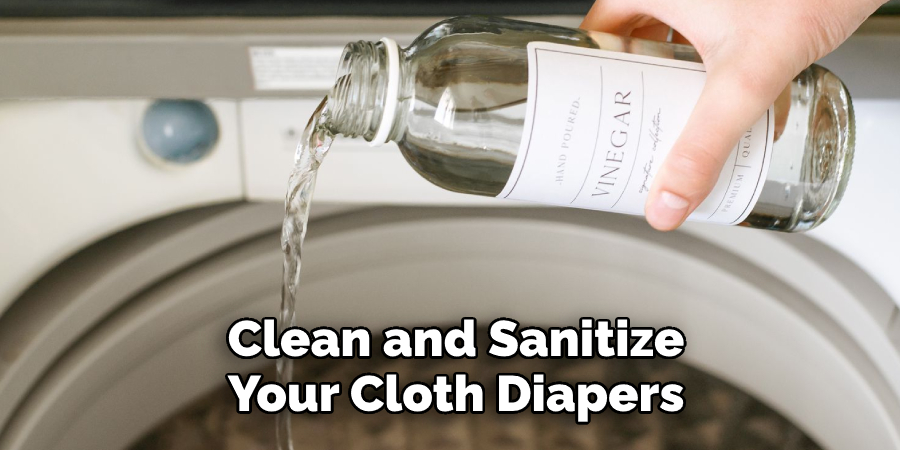
Overall, how you choose to clean and sanitize your cloth diapers will depend on how heavily soiled they are and how severe the stains or odors are. Be sure to consult with a professional for specific recommendations based on your unique circumstances. With the right techniques, however, it is possible to keep your cloth diapers looking and smelling great!
Conclusion
Stripping cloth diapers is easy and only takes a few minutes. You can strip your diapers once a month or as needed. By stripping your cloth diapers, you will prolong their life and ensure that they are working correctly.
Congratulations! You have made it through your first cloth diaper cycle. It is time to wash those diapers and prepare them for their next use. These instructions will help you keep them in top shape so that they can be reused repeatedly. With a little bit of care, stripping cloth diapers is easy and only takes a few minutes.
Hopefully, the article on how to strip cloth diapers has provided you with some helpful tips and advice on how to maintain your cloth diapers effectively. Thanks for reading!
About
Angela is the chief editor of Indoorense. She began her career as an interior designer before applying her strategic and creative passion to lifestyle and home.
She has close to 15 years of experience in creative writing and online content strategy for housekeeping and cleaning,home decorations as well as other efforts.
She loves her job and has the privilege of working with an extraordinary team. She lives with her husband, two sons, and daughter in Petersburg. When she’s not busy working she spent time with her family.

